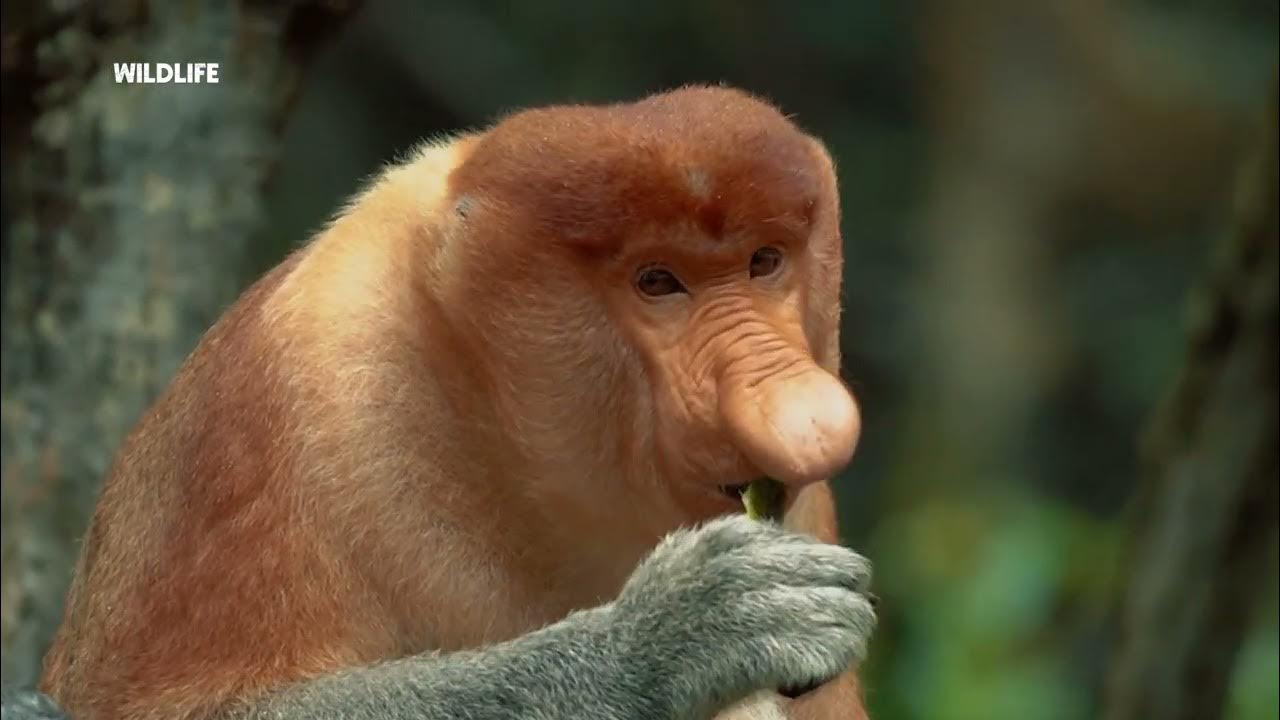Nasib Bekantan Dari Masa Depan Kalimantan | Monyet Bekantan
Summary
TLDRThe video highlights the unique proboscis monkey of Borneo, an endangered species native to Kalimantan, with a focus on its distinctive large nose, habitat, and behavior. The script covers the destruction of its habitat due to deforestation, the threats posed by human activities, and the ecological role of the proboscis monkey. It also explores the social structure of these monkeys, their diet, and reproductive habits. Conservation efforts to protect these primates and their habitat are discussed, emphasizing the importance of preserving Indonesia's rich biodiversity for future generations.
Takeaways
- 😀 The island of Borneo, specifically Kalimantan, has lost over 30% of its tropical forests from 1973 to 2010 due to fires, logging, and plantation industries.
- 😀 The proboscis monkey, an endemic species of Borneo, is known for its distinctive large nose and is part of the Cersopitesidae family of old-world monkeys.
- 😀 There are two subspecies of proboscis monkeys: Nasalis larvatus larvatus, found across Borneo, and Nasalis larvatus orientalis, found in the northeastern part of the island.
- 😀 Male proboscis monkeys have larger noses than females, which may serve to signal dominance or attract females, and influence their vocalizations.
- 😀 Proboscis monkeys are skilled swimmers and can swim across rivers, sometimes up to 20 kilometers, aided by a skin membrane on their feet.
- 😀 The proboscis monkey’s diet mainly consists of plants, especially young leaves, unripe fruit, and occasionally insects. They prefer young leaves due to their energy content and low tannin levels.
- 😀 The bloated appearance of proboscis monkeys is due to their complex digestive system, which ferments leaves to aid digestion, producing gases that make their stomachs appear swollen.
- 😀 Proboscis monkeys live in groups with distinct social structures, such as one-male groups (OMG) and all-male groups (AMG), which help prevent inbreeding.
- 😀 The reproductive cycle of proboscis monkeys includes a 5.5-month pregnancy period, and mothers give birth to a single baby with dark fur and a blue face.
- 😀 Proboscis monkeys are endangered, primarily due to habitat destruction, human conflict, and hunting. Conservation efforts focus on protecting their habitat through national parks and reserves.
Q & A
What percentage of Kalimantan's tropical forests have been destroyed in the past 40 years?
-More than 30% of Kalimantan's tropical forests have been destroyed over the past 40 years due to factors like fires, the logging industry, and the plantation industry.
Why is Borneo often referred to as the 'second lung of the world'?
-Borneo, particularly Kalimantan, was once called the 'second lung of the world' due to its vast tropical forests, which played a crucial role in oxygen production and carbon sequestration.
What is the scientific name of the proboscis monkey?
-The scientific name of the proboscis monkey is *Nasalis larvatus*.
What is the main food source of proboscis monkeys?
-The main food sources of proboscis monkeys are young leaves, fruits, flowers, and seeds, with a preference for young leaves, which are higher in energy and lower in tannins.
How do proboscis monkeys adapt to their diet of leaves?
-Proboscis monkeys have a complex digestive system that uses fermentation to help digest leaves, which are harder to break down than fruit. The fermentation process is aided by bacteria that also neutralize toxins, producing gases that cause their stomachs to appear bloated.
What is unique about the proboscis monkey's ability to swim?
-Proboscis monkeys are excellent swimmers and may be the most aquatic primates. They can swim across rivers and dive for a few seconds, using a skin membrane on their feet to help them swim.
Why do male proboscis monkeys have large noses?
-Male proboscis monkeys have large noses that are thought to serve several functions: as a sign of dominance, to attract females, and to influence vocalizations, where a larger nose results in a louder voice.
How do proboscis monkeys live in groups?
-Proboscis monkeys live in two types of groups: one-male groups (OMG), where one male leads a group of females and their young, and all-male groups (AMG), which consist of juvenile males. Adult males leave their birth groups to avoid inbreeding.
What are the main threats to the survival of proboscis monkeys?
-Proboscis monkeys face several threats, including habitat destruction due to deforestation, hunting, and conflicts with human activities, such as crop predation and traffic accidents. Their habitats are also increasingly being converted for plantations and development.
What measures are being taken to protect proboscis monkeys?
-Proboscis monkeys are listed as endangered and are protected by conservation areas such as national parks and forest reserves. Conservation efforts also focus on habitat preservation and strict regulation of their trade to prevent further population decline.
Outlines

このセクションは有料ユーザー限定です。 アクセスするには、アップグレードをお願いします。
今すぐアップグレードMindmap

このセクションは有料ユーザー限定です。 アクセスするには、アップグレードをお願いします。
今すぐアップグレードKeywords

このセクションは有料ユーザー限定です。 アクセスするには、アップグレードをお願いします。
今すぐアップグレードHighlights

このセクションは有料ユーザー限定です。 アクセスするには、アップグレードをお願いします。
今すぐアップグレードTranscripts

このセクションは有料ユーザー限定です。 アクセスするには、アップグレードをお願いします。
今すぐアップグレード関連動画をさらに表示

Proboscis Monkeys: Species, Size, and Habitat | Borneo Monkeys

Improve Your English Listening about Bekantan | Kurikulum Merdeka kelas 9 chapter 1

Alam Liar Terakhir Pulau Terbesar Ketiga | Pulau Kalimantan – Part 1

Keanekaragaman Hayati Hutan Lindung Sungai Wain | Amazing Indonesia Kalimantan Timur

8 Endemic Animals You Can Find in Indonesia

WILDLIFE - BEKANTAN ENDEMIC PRIMATE OF KALIMANTAN
5.0 / 5 (0 votes)
